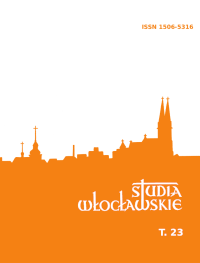Traditional marriage among the Enga people of Papua-New Guinea
DOI:
https://doi.org/10.52404/ttnwloc.stwl.23.24Keywords:
clan, people, marriage, tribe, tradition, customs and ritualsAbstract
The article presents the stages of the traditional marriage of the Enga people in Papua New Guinea. The marriage consists of several different customs, rituals and beliefs. By working on this topic, the author attempted to present and bring closer to the reader a “different world” of culture, to help to look at the marriage through the eyes of the inhabitants of Papua New Guinea and to show what role marriage plays in this community. The article is based on the literature on the discussed subject and his own ethnographic field research conducted during his stay in this country as a Catholic missionary in 1986–1987.
The traditional way of marrying among the Enga people is closely linked to the local tradition. The article shows the ways of matching couples, the details of determining the bride-wealth payment and the marriage itself, as well as the formula for introducing the marital life. Marriage, not only among the Enga people, but also in other communities of Papua New Guinea, is more than just a solemn union between a man and a woman, as it is the beginning of a closer relationship between two families and clans. The tribal community tries to maintain the biological potential that determines security, as well as ethnic and religious identity. A good marriage is considered to be one that contributes to the better functioning of the clan.
Downloads
References
Bęben W., An Anthropological view of sexuality, w: Human Sexsuality in Melanesian Cultures, red. J.F. Ingebritson, Goroka 1990 (Point series, no. 14).
Bęben W., Rosiński F.M., Tradycyjne małżeństwo na Nowej Gwinei i jego przemiany, w: Ludy i kultury Australii i Oceanii. Materiały z VI konferencji naukowej zorganizowanej we Wrocławiu w dniach 25 i 26 listopada 1994 r. przez Katedrę Etnografii
Uniwersytetu Wrocławskiego, red. B. Kopydłowska-Kaczorowska, F.M. Rosiński, Wrocław 1998, s. 219–235.
Dworczyk W., My dzicy Papuasi, Warszawa 1975.
Dworecki T., Słowo wstępne, w: Z kraju kamiennej siekiery. Misjonarze werbiści o Nowej Gwinei 1919–1973, red. T. Dworecki, Warszawa 1975, s. 5–11.
Gibbs Ph., Lepe: An Exercise in Horticultural Theology, “Catalyst”, 18(1988), nr 3, s. 215–234.
Gibbs Ph., Titi Pingi. Theology of an Enga Praise Poem, “Catalyst”, 20(1990), nr 3, s. 117–138.
Haanstad E., Bogerhoff Mulder W., Bride-price, w: Encyclopedia of Cultural Anthropology, red. D. Levinson, M. Ember, vol. 4, New York 1996, s. 151–153.
Kyakas A., Wiesser P., From inside the women’s house. Enga women’s lives and traditions, Buranda 1992.
Kozyna A., Rosiński F.M., Struktura społeczna plemion górskich na Nowej Gwinei, w: Australia i Wyspy Pacyfiku. Ludy i kultury, red. E. Pietraszek, Wrocław 1983 (Acta Universitatis Wratislaviensis, no. 594).
Kruczek Z.Z., Działalność misyjna Kościoła katolickiego w prowincji Enga w Papui Nowej Gwinei 1947–1987, Pieniężno 1991.
Kruczek Z.Z., Wśród górali w rajskim buszu. Obraz dzieła misyjnego w PNG na przykładzie katolickiej diecezji Wabag, Marki – Struga 1997.
Lang A., Enga dictionary with English index, Canberra 1973.
Larson J., Enga courtship and marriage customs, Amapyaka 1988.
Lehman T., Schaan H., Brideprice in Enga Marriage, Amapyaka 1968.
Mihalic F., The Jacaranda dictionary and grammar of Malanesian Pidgin, Port Moresby 1971.
Nowy leksykon PWN, red. prowadzący A. Dyczkowski, Warszawa 1998.
Paśnikowska M., Ludy świata. Etniczna podróż przez kontynenty, oprac. D. Maybury-Lewis, W. Davis, tł. A. Karp, Warszawa 2002.
Praktyczny słownik współczesnej polszczyzny, t. 20, red. H. Zgółkowa, Poznań 1999.
Spryth L., Mee enda – Only a woman. Today’s Enga women in environment of change, w: New Horizons for Melanesian Women, red. R. Jamiesion, Goroka 1975, s. 22–31 (Point series, no. 2).
Sroka A., Zwyczaje i wierzenia związane z zawarciem małżeństwa u ludu Enga w Papui Nowej Gwinei, Lublin 2001 (mps KUL).
Szynkiewicz S., Małżeństwo, w: Słownik etnologiczny, terminy ogólne, red. Z. Staszczak, Warszawa – Poznań 1987, s. 222–225.
Szynkiewicz S., Płatność małżeńska, w: Słownik etnologiczny, terminy ogólne, red. Z. Staszczak, Warszawa – Poznań 1987, s. 275–277.
Takori P.L., Some Notes on Customary and De facto Marriages in Papua New Guinea, “Catalyst”, 16(1986), nr 4, s. 302–314.
Tumu A. [i in.], A view of Enga culture, Wabag 1989.
Wargacki S., Papua-Nowa Gwinea, w: EK, t. 14, Lublin 2010, kol. 1315–1317.
Wissner P., Tumu A., Historical vines. Enga networks of exchange ritual and warfare in Papua New Guinea, Washington 1998.
Woźnicki A., W poszukiwaniu człowieka pierwotnego, Lublin 1994.





